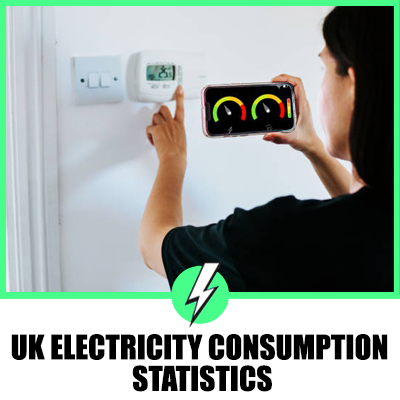How Much Energy Does a Fireplace Use? A Comprehensive Look
Electric fireplaces have become a staple in homes across the UK and the US.
They offer a blend of aesthetic appeal and cozy warmth.
Yet, as their popularity grows, so do concerns about their energy consumption and the potential impact on utility bills.
In this article, we’ll delve deep into the world of electric fireplaces, addressing the most pressing questions homeowners have.

Contents
Does an Electric Fireplace Make Your Electric Bill Go Up?
Yes, using an electric fireplace will increase your electric bill.
According to Eco Cost Savings, electric fireplaces cost an average of $0.22 per hour to run.
If you use the fireplace for 5 hours a day at its maximum power, it will cost approximately $7.58 per week or $32.50 per month.
This means that, on average, electric fireplaces can increase monthly US electricity bills by 28.3%.
Average Costs of Running an Electric Fireplace
| Metric | US | UK |
|---|---|---|
| Hourly Cost | $0.22 | £0.18* |
| Daily Cost (5 hours) | $1.10 | £0.90* |
| Weekly Cost (5 hours daily) | $7.70 | £6.30* |
| Monthly Cost (5 hours daily) | $33.00 | £27.00* |
| Annual Increase in Electricity Bill | 28.3% | 26.5%* |
*Note: UK costs are approximate and can vary based on local electricity rates.
Is Electric Fireplace Expensive to Run?
Electric fireplaces, while energy-intensive, are comparable in consumption to many household appliances that produce significant heat.
On average, they can increase monthly electricity bills in the US by between 19.6% and 29.3%.
To put this into perspective, the average monthly cost to run an electric fireplace ($32.50) is equivalent to charging a standard electric car 5.8 times or boiling an electric kettle 3,611 times.
Do Electric Fireplaces Save on Heating Bills?
Electric fireplaces can potentially save on heating bills if they are used as a supplementary heat source in specific rooms.
This allows you to lower the thermostat for the central heating system.
However, if used as the primary heat source, they might not be as cost-effective as other heating methods.
What Are the Disadvantages of an Electric Fireplace?
- Energy Consumption: Electric fireplaces can be energy-intensive, leading to higher electricity bills.
- Heat Limitation: They might not be sufficient as the primary heat source for larger spaces.
- Lack of Real Flames: Some individuals prefer the authentic experience of real wood-burning fireplaces.
- Initial Cost: High-quality electric fireplaces can be expensive to purchase initially.
Do Electric Fireplaces Use a Lot of Electricity?
Yes, electric fireplaces do consume a significant amount of electricity.
On average, they cost $0.22 per hour to run, with some models costing between $0.15 to $0.23 per hour.
This consumption is based on the average electricity rate in the US.
Electric Fireplaces vs. Traditional Fireplaces
Electric fireplaces have become a popular alternative to traditional wood-burning fireplaces.
The convenience they offer, coupled with the elimination of the need for wood or gas, makes them an attractive option for many homeowners.
However, there’s a common misconception about their energy consumption.
Essential Home and Garden sheds light on this topic, emphasizing that electric fireplaces are not significant energy guzzlers.
In fact, their energy consumption is comparable to that of a space heater.
They use a 1500 watt heating element, which produces heat in the 4,000-5,000 BTU range, similar to a space heater.
Efficiency of Electric Fireplaces
Electric fireplaces stand out in terms of energy efficiency.
Unlike wood-burning, gas, or pellet-burning fireplaces, electric ones can convert nearly 100% of energy into heat.
In contrast, wood-burning fireplaces can lose up to 90% of the fire’s heat through the chimney.
This makes electric fireplaces a more efficient choice for homeowners looking to maximize heat output without wasting energy.
Cost of Running an Electric Fireplace
The cost of operating an electric fireplace is a primary concern for many.
Using the Electric Cost Calculator provided by Napoleon, Essential Home and Garden offers a breakdown of the potential costs.
For instance, if an electric fireplace is used for 4 hours daily at off-peak rates, the total electricity cost can be around $169 per year.
This calculation is based on a fireplace hardwired for 220 volts and an off-peak rate of $0.082 per kWH.
It’s worth noting that the heater in the fireplace consumes the most electricity.
When used without the heater, the cost drops significantly.
Electric vs. Gas Fireplaces
Stylish Fireplaces addresses the debate between electric and gas fireplaces.
While gas appliances, like furnaces, are efficient for home heating, gas fireplaces are not as efficient.
This is because gas fireplaces are designed to produce aesthetically pleasing flames, which are less efficient than the blue flames seen in furnaces.
Electric fireplaces, on the other hand, offer the flexibility of using the flames without heat, reducing electricity consumption.
Moreover, the size of an electric fireplace doesn’t significantly impact its operating cost.
In contrast, larger gas fireplaces consume more gas, making them more expensive to run.
Conclusion
Electric fireplaces are not only stylish and convenient but also energy-efficient.
They offer homeowners the flexibility to enjoy the ambiance of a fireplace without the associated high costs.
Whether you’re considering an electric fireplace for its aesthetic appeal or its heating capabilities, it’s clear that they are a cost-effective and energy-efficient choice.





